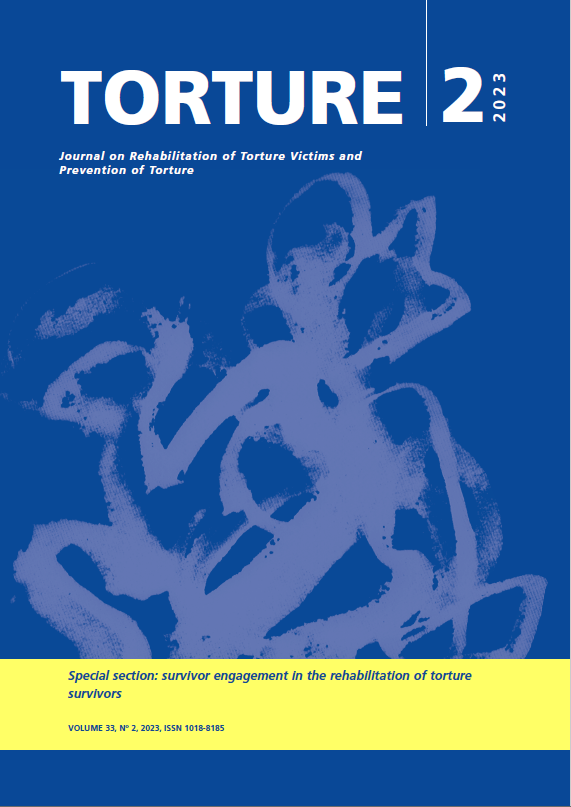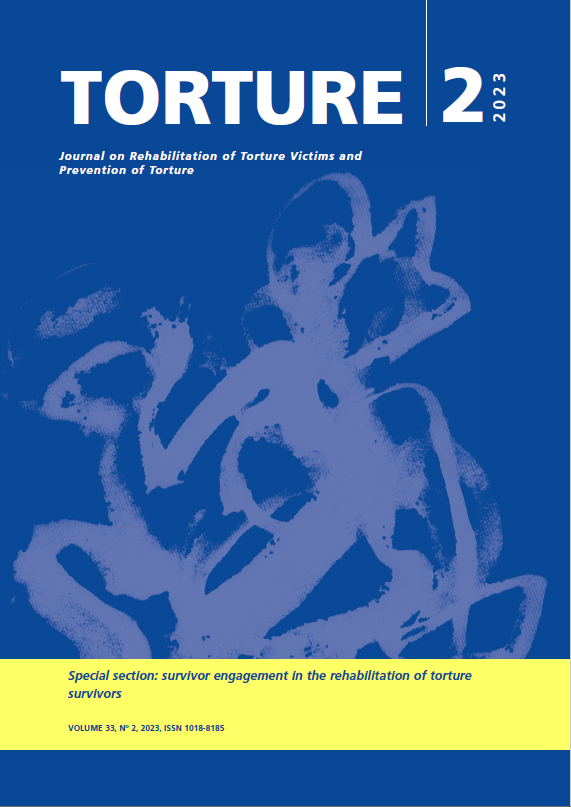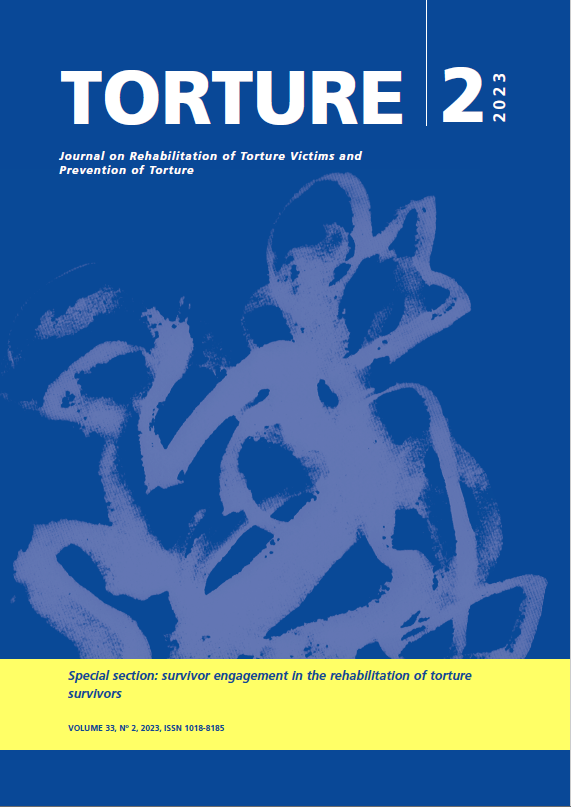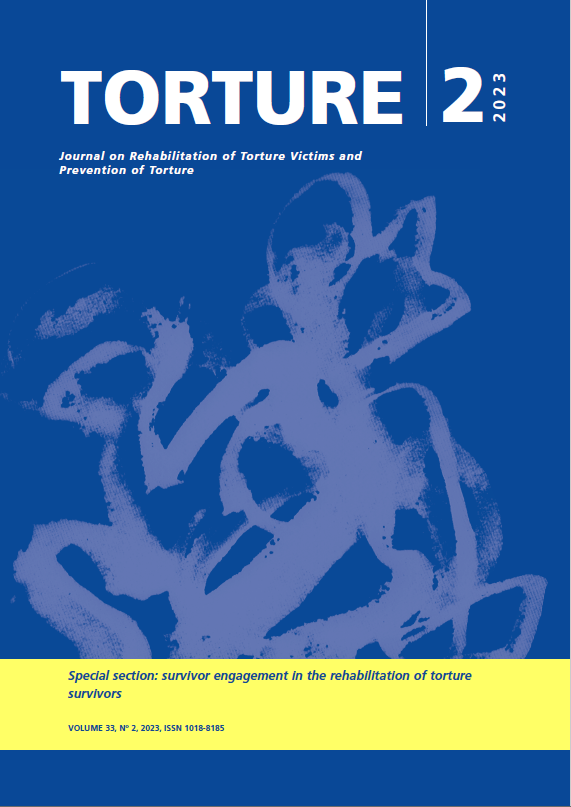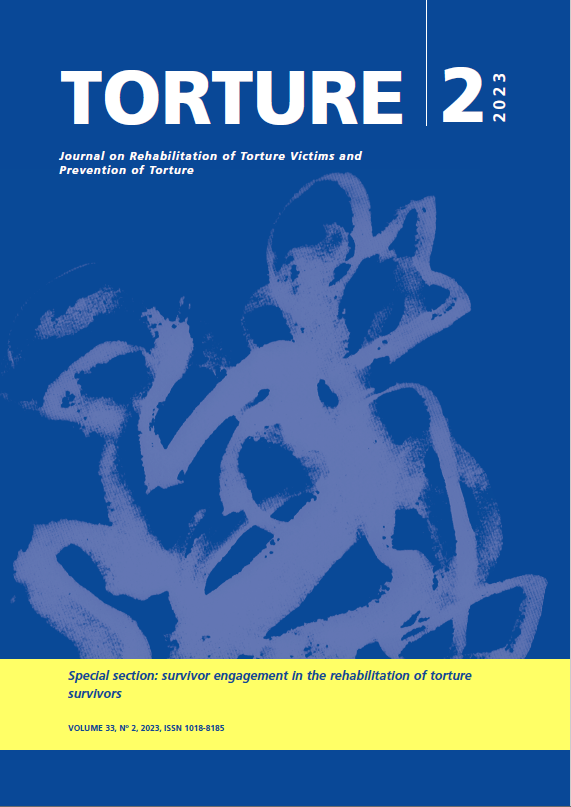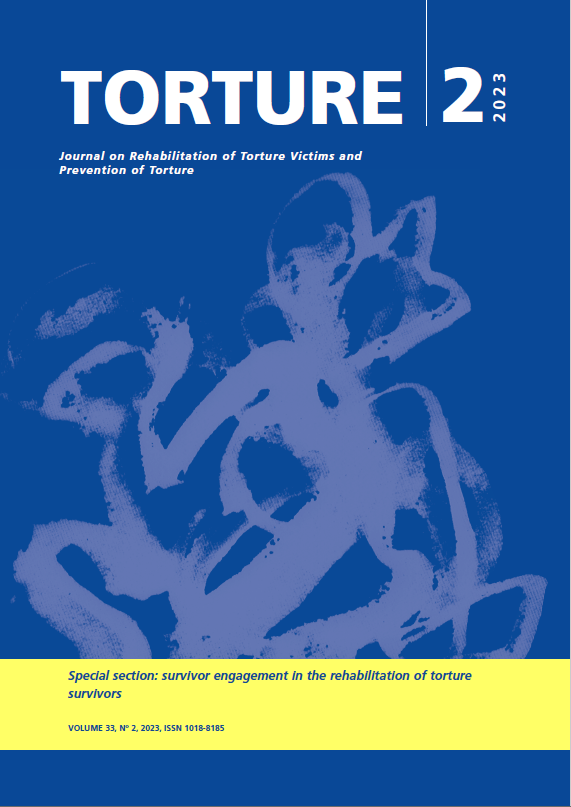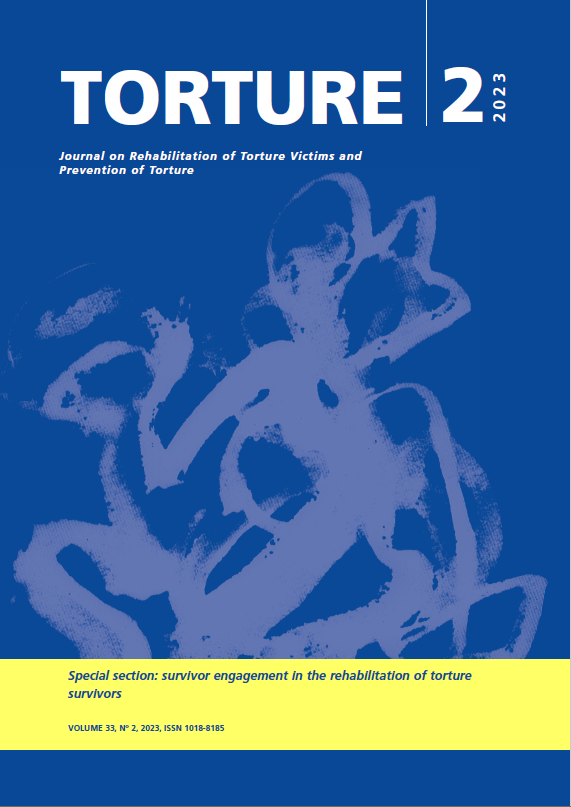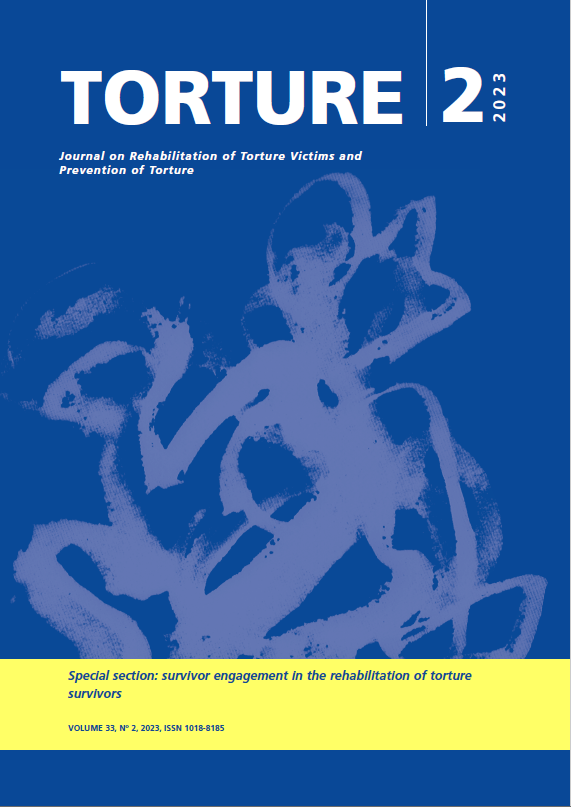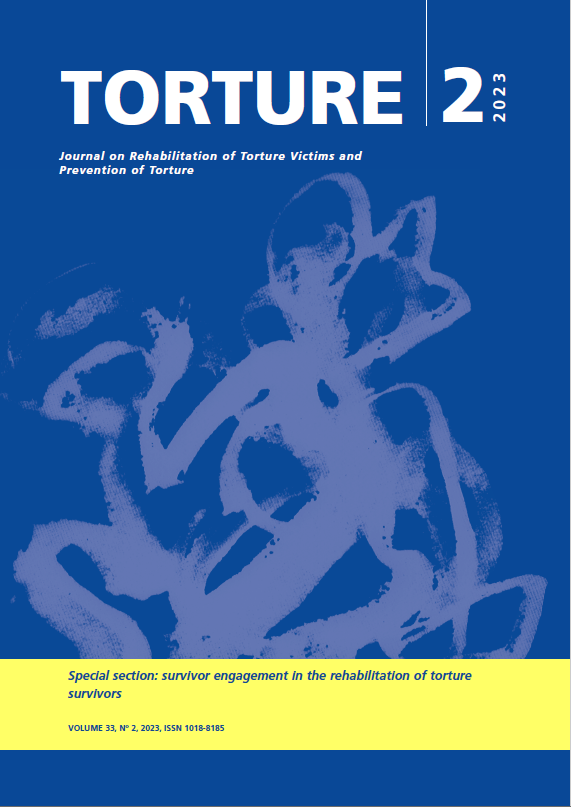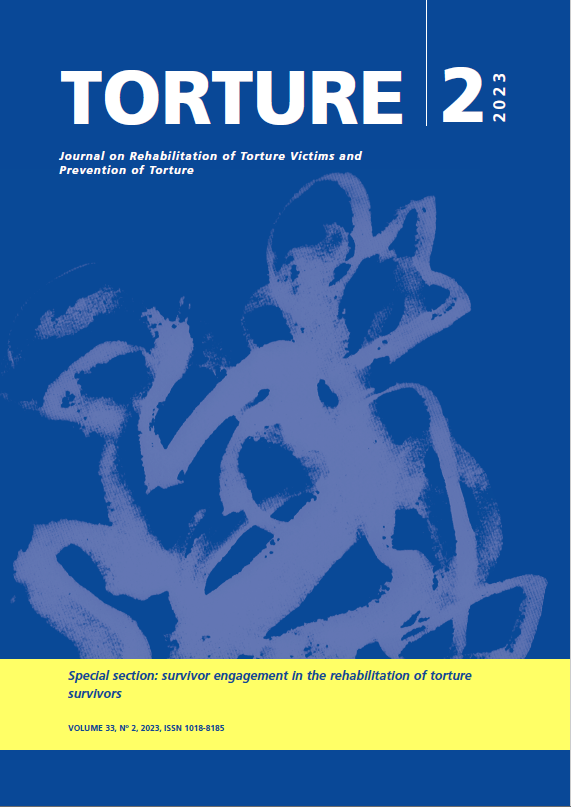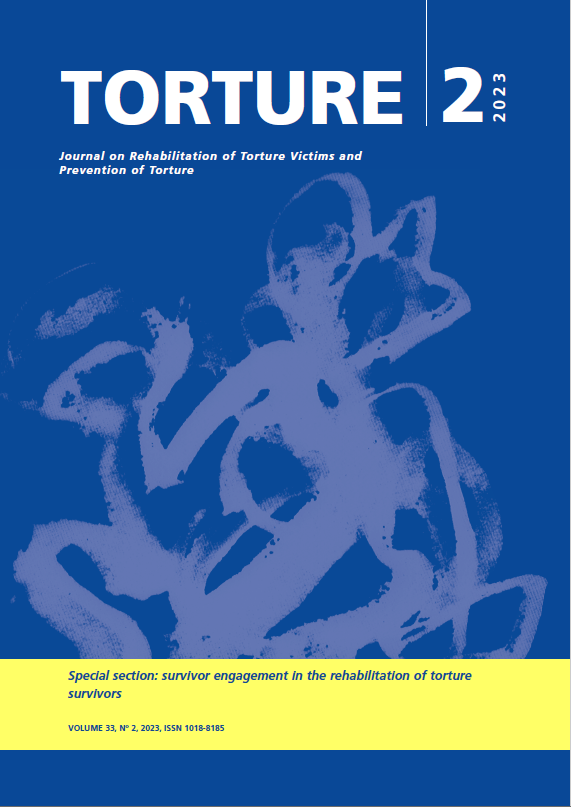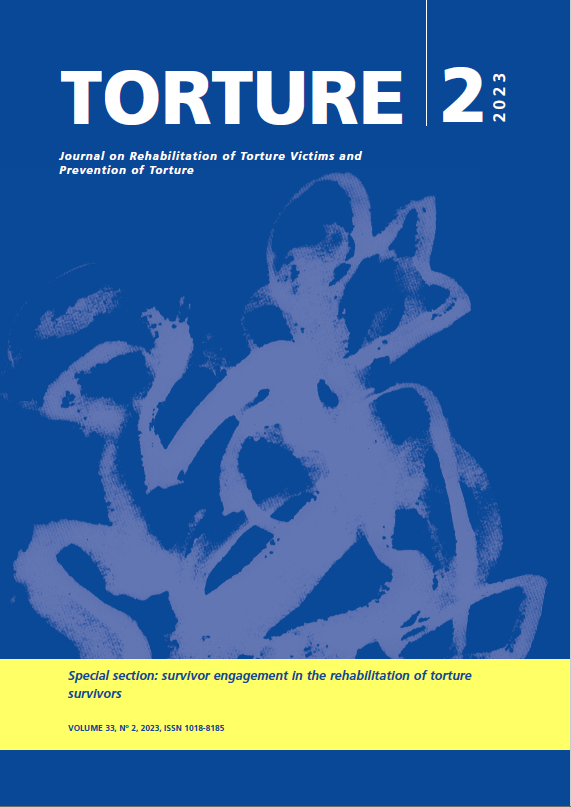Vol. 33 No. 2 (2023): Torture Journal: Journal on Rehabilitaiton of Torture Victims and Prevention of Torture
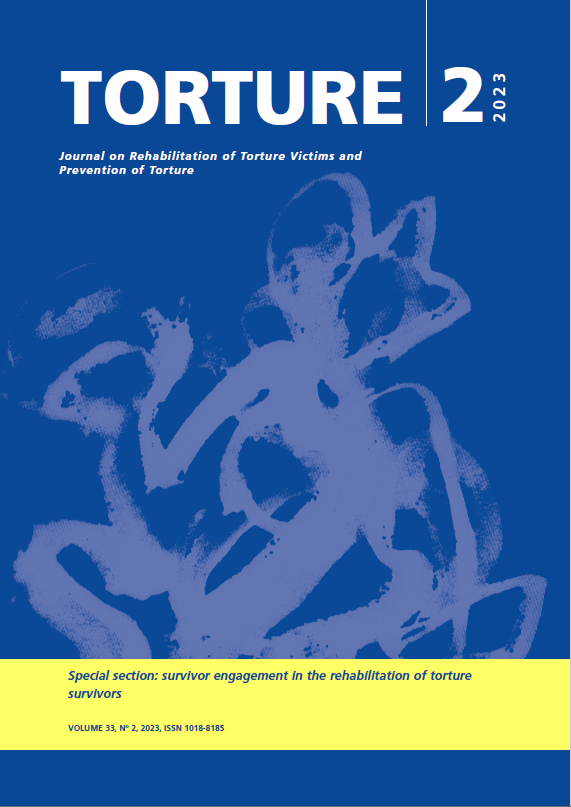
Pau Pérez-Sales introduces this issue with an Editorial that provides us with a background of the origins of survivor engagement being historically implemented in the Global South.
The Editorial is followed by the Special Section on Survivor Engagement in the Rehabilitation of Torture Survivors.
Susan Wyatt opens the section with a paper that reflects on the notions of restoring power or ‘agency’ to survivors, discussing different conceptual frameworks and pathways for effective and strategic mechanisms for facilitating ‘agency’ within the spectrum of torture rehabilitation.
Einolf et al. presents a qualitative study that explores current practices, best practices, and the advantages and disadvantages of engaging survivors in the direction and provision of rehabilitation services. It discusses the risks of re-traumatization and presents practices that involve engaging survivors in ways that do not instigate their trauma.
Moreover, Mikel Soto, presents the survivor-lead experience of the Network of Tortured People of Navarre and analyses the keys to this process of collective empowerment, describing the self-organising process of the victims and some lessons that may be useful for other realities and groups of torture victims who want to engage in self-organising processes.
Henceforth, Seini O’Connor and colleagues contribute to the special section with three articles. The first one describes TASSC’s model for engaging survivors in advocacy and presents evidence on the personal impacts such engagement can have. The second one looks at the characteristics of survivors who engage in advocacy in comparison with those who do not. The third one explores survivor engagement in the form of cultural facilitation, drawing on a case example of cultural bridging involving a pilot programme to train torture survivors and former refugees to become cross-cultural facilitators supporting mental health services for displaced communities.
The special section is closed with the contribution from Rachel Hoare, further expanding on the benefits of the befriending programme within Spirasi’s holistic approach and the importance of collaborative expressive arts activities in building befriending relationships. She does that through an empirical study that explores, in complementary ways, the impact of this befriending programme on befrienders and befriendees and incorporates their voices into recommendations for optimising the service.
The perspective section, entails three contributions.
José Quiroga and Ana Deutsch share their personal memories to describe and reconstruct the journey to the development of forensic torture assessment tools, before the existence of the Istanbul Protocol. They review the historical precedents of the Forensic Assessment of Torture Survivors in the US in the 1970s and 1980s, the first model of affidavit developed in Los Angeles, setting the precedents of the US branch of the construction of the Istanbul Protocol that was developed in the late 1990s.
Christian DeVos and colleagues explore extra-carceral governmental actions that constitute torture or ill treatment of socially and economically marginalized populations, advocating for a more contextual approach to the understanding of what constitutes torture or ill treatment, and, consequently, a more expansive interpretation of states’ obligations to prohibit and prevent it under international law. Building on examples that unsettle the conventional understanding of torture focused on carceral and custodial settings, they also offer recommendations for how clinicians and health and human rights researchers, can better elucidate the links among torture, poverty, and vulnerability to hold perpetrators accountable and help states develop laws, policies, and other measures to prevent the perpetration of state-promoted or sanctioned acts of torture or ill treatment.
Daniel Weishut and colleagues present their insights about the use of the Istanbul Protocol in Israel, as collected by a group of experts in the documentation of torture and ill-treatment, at the reception of the revised (2022) version.
This is followed by a book review by Giulia Berta of the volume Migration and Torture in Today’s World, curated by Fabio Perocco and published by Ca’ Foscari Editions in 2023.
This issue also announces Dr. Mahmud Sehwail’s paper “Personal reflection” as the winner of the 2022 CTI Prize, after being the most voted by the IRCT membership and the Torture Journal readership. Congratulations, Dr. Mahmud!
Finally, this issue is concluded with the forthcoming call for papers for the special sections on Livelihoods and Prisons, in which we encourage you all to submit papers, in case you have relevant research and/or experiences to share in these areas.
You, the readers and authors, are responsible for the increasing growth of Torture Journal: a home for all.
We would like to especially thank the authors for their excellent work and contribution to the Torture Journal, and OSSTT and STARTTS for their valuable continued support.

